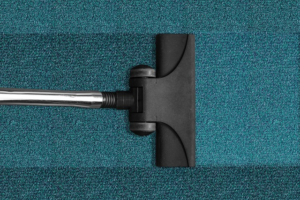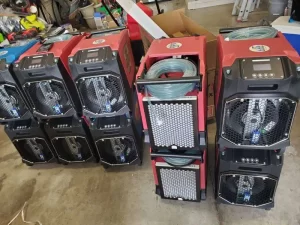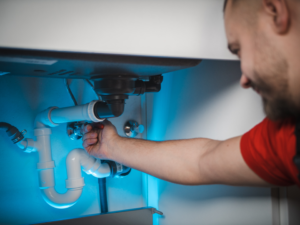Damage from water can strike unexpectedly, leaving homeowners and business owners in distress. The aftermath of this damage can be overwhelming, whether due to broken pipes, a leaking appliance, or severe weather conditions, and knowing the best water extraction tips will be crucial to saving the property.
In a city like Nashville, TN, where heavy rainfall and flooding can occur, understanding water extraction techniques and structural drying is crucial for efficient restoration. Most property owners are unaware of the best ways to deal with water issues, which is where professionals like the team at Flood Kings can help. Contact us to obtain an accurate estimate and initiate much-needed repairs for your property.
In this detailed guide, we will share some helpful tips. When it comes to water removal and drying to help restore your property after water damage in Nashville, TN.
Start By Calling the Insurance company
Before you even consider taking steps to extract water from your home, you need to contact the insurance company as soon as possible once the damage is discovered. You’ll need to discuss your coverage plan with them and provide as much documentation of the damage as possible. If you work with Flood Kings, we will complete much of this documentation on your behalf for the insurance claim.
Once you have communicated with the insurance company, the process of removing excess water can begin.
Water Extraction Services: Initial Assessment and Safety Precautions:
The water withdrawal and drying journey begins with a comprehensive assessment of the water damage. Trained professionals from Flood Kings will evaluate the affected areas, identify the source of water intrusion, and categorize the damage (clean water, grey water, or black water). This assessment helps develop a customized plan to address the specific needs of your property.
Ensuring safety is a top priority during the water eradication process. Professionals will take necessary precautions, such as turning off the electricity in affected areas and wearing appropriate protective gear. Before proceeding with water removal, they will also identify any potential hazards, such as structural damage or compromised ceilings.
Removal of Wet Items
A quick drying process begins with the removal of wet items from the affected area. The less water there is in the room, the easier it is to extract water and dehumidify the space. This includes furniture, carpets, and unsalvageable building materials. If possible, let these items dry in the sun.
Swift Standing Water Removal and Water Extraction:
The immediate goal after water damages your property is to extract water as quickly as possible. Professionals utilize powerful pumps and specialized extraction equipment to remove water efficiently. This step helps prevent further damage to structures, flooring, and belongings while reducing the risk of growing mold.
If you do not have your own submersible pump or wet vacuum, you will need to contact services quickly to prevent further damage. Water removal is a crucial first step in the restoration process.
Excess Water Detection and Mapping:
Even after the visible water is extracted, unwanted water remains in hidden areas.
Professionals employ advanced detection tools and techniques to identify water pockets within walls, flooring, and other structural components. Moisture meters and infrared cameras map the affected areas accurately, ensuring a thorough drying process.
By identifying these hidden wet areas, professionals can develop a targeted drying plan, optimizing the placement of drying equipment and preventing future issues like mold development or structural damage.
Structural Drying Techniques:
Once the standing water is removed and moisture mapping is complete, the focus shifts to structural drying.
Ventilation and Evaporation
Professionals strategically place high-powered air movers and dehumidifiers to create optimal drying conditions. Air movers generate airflow, accelerating evaporation, while dehumidifiers remove excess moisture from the air. Opening the windows and doors can also be helpful to increase air circulation on a nice day.
The combination of air movers and dehumidifiers promotes efficient drying, helping to prevent further damage and inhibiting the growth of mold or mildew. Throughout the process, professionals continuously monitor temperature, humidity, and moisture levels to make necessary adjustments and ensure optimal drying conditions. With professional contractors and high-quality equipment working together, Flood Kings can efficiently ventilate and dry out the area.
Monitoring and Adjustments:
Drying a property is not a one-size-fits-all approach. It requires continuous monitoring and adjustments to ensure effective drying.
Professionals regularly measure moisture levels in the affected areas, track the progress, and modify the drying equipment placement.
By closely monitoring the drying process, professionals can identify any potential issues, such as hidden moisture pockets or insufficient drying, and take prompt action to address them. This meticulous approach helps achieve thorough and successful drying results.
Restoration and Repairs:
Once the affected areas are thoroughly dried, the restoration process begins. Depending on the extent of the damage caused by water, this may involve repairing or replacing damaged structures, flooring, drywall, or other affected components. Professionals will work closely with you to ensure a seamless restoration process, coordinating with trusted contractors if necessary.
The restoration phase aims to return your property to its pre-damage condition, ensuring both functionality and aesthetics are restored. Skilled professionals will repair or replace damaged materials, such as drywall, insulation, or flooring while addressing any structural issues arising from the damage caused by the water.
Mold Prevention and Remediation:
Water damage creates favorable conditions for mold growth, posing health risks and further damaging your property. Professionals take proactive steps to prevent mold by applying antimicrobial treatments to affected surfaces. These treatments inhibit mold growth and mitigate the risk of future mold-related issues.
If mold is already present, professionals employ appropriate remediation techniques. This includes safely removing affected materials, thoroughly cleaning and disinfecting the area, and ensuring proper ventilation to prevent the recurrence of mold growth.
Final Inspection and Preventive Measures:
Once the restoration and drying processes are complete, professionals conduct a final inspection to ensure that all necessary repairs have been made and that the property is fully restored. They will also provide recommendations on preventive measures to minimize the risk of future damage.
This may include suggestions for improving drainage systems, reinforcing vulnerable areas, or implementing early warning systems for potential water-related issues.
In conclusion, water eradication and structural drying are vital steps in restoring your property after water damage in Nashville, TN. By entrusting the process to experienced professionals, you can ensure efficient water removal, thorough drying, and effective restoration.
If you face flood damage, don’t hesitate to contact a reputable water extraction company in Nashville, TN, to help you navigate the challenges and restore your property to its pre-damage condition.








